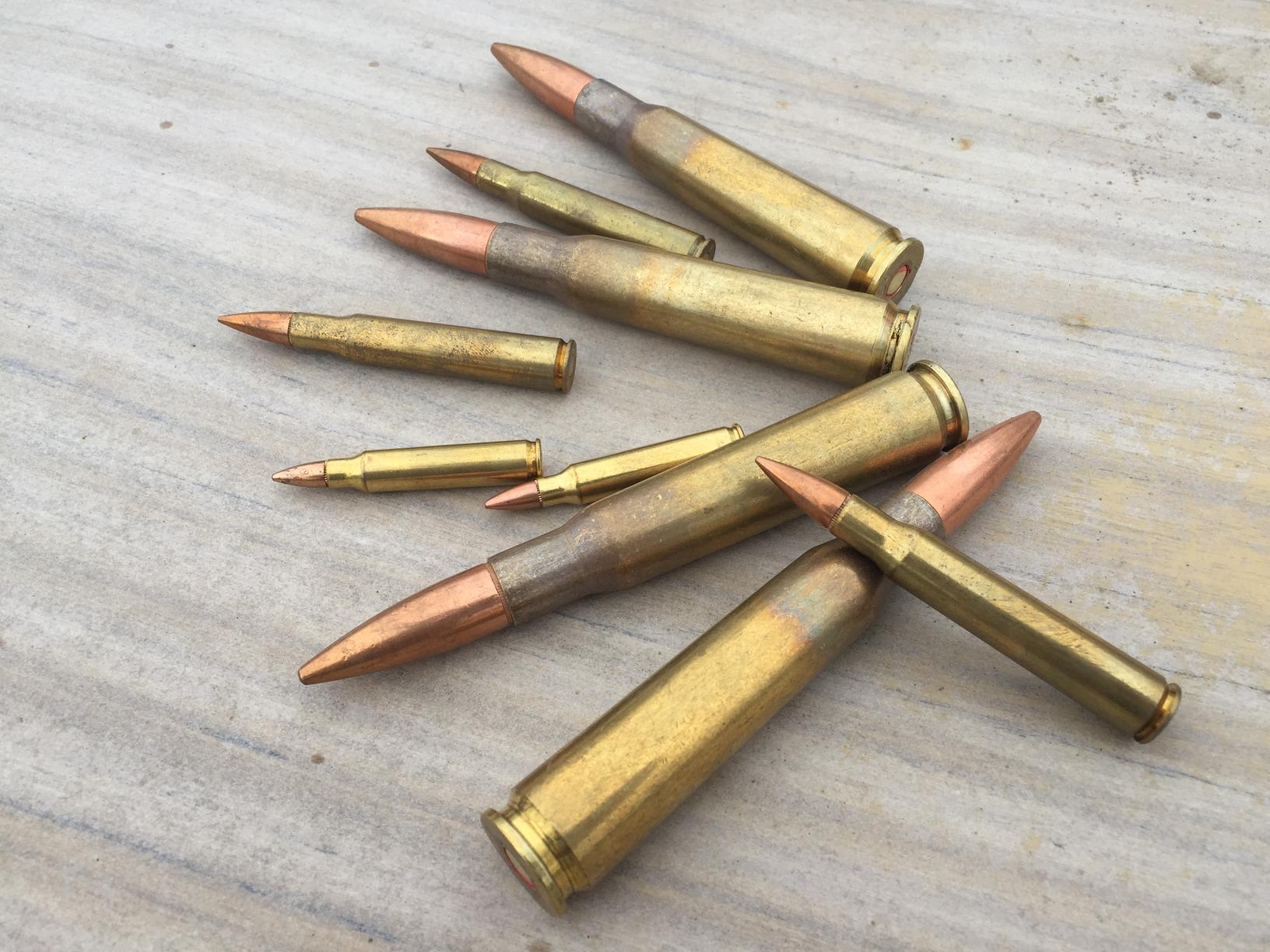Email a copy of 'The Handloader Never Wants For Ammo, Part 2, by Wingfootjr' to a friend
6 Comments
- Ad SOURCE FOR IVERMECTIN / HCQ, ANTIBIOTICS, ALL REGULAR MEDS“Mygenericstore” is a well-established pharmacy service that deals primarily with generic medicines produced by quality-assured manufacturers from developing countries.
- Ad Barter and Sell at Simcour Trading PostA new site for individuals to barter and sell items of interest to other like-minded individuals


Computing point blank range(s) for loads is very useful (first, learn what “point blank range” actually means, not what Hollywood thinks it means). It will require knowing the projectile velocity and drop-at-distance to determine the optimum PBR for that cartridge/rifle/load combination. Extra points for using actual range determined drop-at-distance data rather than computing it. For multiple purposes, cheap 8.5X11.0 copy paper works well as targets; landscape mode for deer-sized, portrait for “other,” folded in half or torn (horizontal or vertical) or into quarters for miscellaneous targets, comes in packages of 500 (1 ream) for about $3-6.
RE: applying case lube – RCBS has a “case lube kit” with case lube and a foam pad in a plastic case with a snap-on cover. Whatever lube you use, the pad works well and the cover keeps it clean. Dillon Precision has pump-spray-on lube that works well, too.
Dillon also makes an extra large rotary media separator. After using it to separate media from cases, you can use the tub and basket with water & dish soap (Dawn works best) to remove case lube, will require fresh water rinse and drying the cases. Or waterproof rotary tumbler with stainless steel pins, water and Simple Green, will still need a fresh water rinse and drying. Buy lots of extra pins…. a brass drying cabinet is an easy build – cheap 1X3 or 1X4 wood frames, staple coarse window screen to each frame, spread brass on screen, stack frames, use small 500 watt electric space heater (moving air on very low heat best, be aware of any fire hazards and distances to combustible materials). Caution note: do not avoid employ spouse’s hair drier, won’t dry the brass fast enough to avoid associated negative side effects, and definitely do NOT put brass-filled cookie sheets in the oven….
Wilson makes a great case mouth deburring tool to clean up inside & outside of case mouths after trimming.
I wet tumble with stainless steel media. A Dillon 650xl tool head dedicated to 5.56 to deprime, full case resize, swag the primer pocket, power trim the case to length, resize neck only and a second wet tumble to remove any burrs or debris and to clean the primer pockets.
I don’t believe it is as critical on the procedures or the steps an individual follows to reload, it’s vital on the safety and the end results.
Maybe you’ll get to it, but if somebody wants to get their feet wet in reloading or have something more in tune with a bug-out situation, it is really hard to beat the Lee Loader kits. With one of those, you can buy the cheapest ammo you can find and reload them with powder and bullet weights to your liking, and really cheaply and simply.
Mostly great info here of course. But on the case lubing I feel it is way overkill from all advisors. I take the RCBS case lube in a pump bottle, spread out say 20 .308 cases in a cigar box, and spray them all a couple times. Then run them thru the sizing die, wipe them clean, and go to measure with electronic ( or mechanical, I have both ) calipers case length, and trim with my Frankford Arsenal case trimmer. This is electric but of course for grid down situation I have 2 mechanical / hand operated trimmers. That’s my way to fly on rifle brass.
Watching my dad reload are some of my oldest memories. As we got older my brothers and I would help him. The older we got the more we were allowed to do. Reloading is a great way to spend time with kids/family (we reload as a family to this day), it teaches kids about metalurgy (casting your bullets and why you need to case trim rifle cases), pressure, energy etc. I laugh when I hear people say “how “dangerous” reloading is because Billy Joe Jim Bob did it and blew up his gun. Yep it is damage outs when don’t know what your doing and don’t seek out knowledge. True story- 2 guys walk into a local guns, one older than the other and he looks pretty beat and frail. They “unwrap” what is left of a 1911 and ask the shop owner if he could fix it. Shop own takes it and discovers that there is a round still in battery. He ask the guys what happened. Younger guy says, my dad started reloading. He took a 45 casing and filled it to the top of the case with powder then seated the bullet. Guy is lucky to have his hand still. Oh and did he go to the hospital? Nope called his son up to take him to the gun shop to get his 1911 fixed. Needless to say that didn’t happen.
I use the Dillon Vibrator polisher with ceramic media after I punch out the primers. It cleans the pockets nicely and removes any dirt that may harm my sizer dies. I also drill and flair the primer flash holes for a consistent ignition. Lee makes the drill and flairing tool. If you are using only one gun and it is a bolt action you can prolong the case life and improve you’r accuracy by using a neck sizing die instead of a full length sizing die. You still need the full length die if you are shooting a semi auto or lever gun.